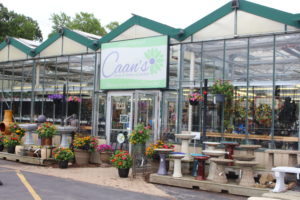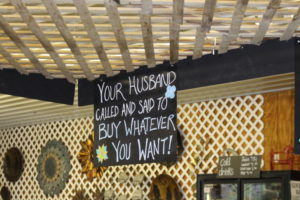Darwinism Redux
One of the philosophies that Charles Darwin, the noted English naturalist, was known for was “the survival of the fittest.” Most people are familiar with this notion as applied to natural evolution: The strongest of the species survive because they have traits and characteristics that allow them to compete more effectively than their competitors often at the competitors’ expense.
We often heard this when learning about the upward evolution in the animal kingdom, a rationale as to why some species declined or became extinct while others survived and thrived. We learned that in the jungles of Africa, each of the animal species that exist today survived because they had unique traits, physical strengths or defensive attributes that permitted them to compete effectively with their predator adversaries. Some survived because they were f leeter of foot, others because their skins were thicker and could ward off enemy attacks. Others developed horns or sharp hooves for offense and defense, or learned to climb trees to escape battles. Some learned to survive on little water or local vegetation, or they developed the ability to f ind or access food in different ways and places.
Closer to Home
There’s also a form of economic Darwinism that occurs and we’ve seen this over the years as some retail channels get stronger and, as they grow, other weaker competitors decline. It’s almost a rule of nature, a yin and yang proposition.
But strength in the economic Darwinism premise can take many forms. It’s not just physical size (i.e., number of stores) or the sales dollars generated. It’s not just the fact that one has better cash f low than a competitor. It’s not just because one has a stronger management team than the chain down the street. It’s not just the advertising budget one has at their disposal. These are all important elements of strength and advantage, but individually they probably would not be deciding differentiators between survival and extinction. Yet, collectively, they could be a major deciding factor in whether one survives or not.
A lesser-known Darwinism more clearly defines what he believed really makes the difference in his theorem: “It is not the strongest of the species that survives, nor the most intelligent, but the one who is most responsive to change.”
Adaptation Is Crucial
From my interpretation of Darwin’s theories, physical size and intelligence do matter in order to survive, but the most critical factor is the ability to adapt to change. And not only just adapt, but adapt faster than your competitors or predators. Stand still, and your competitors adapt and grow faster than you, leaving you to suffer the economic consequences. Move forward and adapt just a little faster than they do, and you increase your chances of thriving and surviving.
All of this discussion about survival and extinction sounds pretty harsh, doesn’t it? But in today’s economically challenging environment, there’s no way to sugar coat the reality that not all companies can survive or continue to operate at the level they have in the past.
And, as we’ve seen in the recent financial reports, companies of all different sizes are facing the same shared dilemmas; I can’t think of any industry that has been immune to the reduced consumer discretionary spending, tighter availability of credit, higher energy costs, fallout from the sub-prime loan debacle or the bursting of the housing bubble. The playing field has changed for everyone, but this also means that the playing field has been leveled for all of us. The challenge and opportunity for you is how quickly you can strategically and tactically lead your business to adapt to the current situation and the new spending mindset of the consumer, as compared to how agile your competitors are. If you’re faster and smarter, you have a good chance of thriving and surviving; if you’re slower or stagnant, you stand a high likelihood of decline. It’s that simple…
Some Thoughts on Adapting
Understanding the consumer. Retail is all about satisfying the needs of the consumer. And in the past six months, consumers’ mindsets and purchasing behavior have changed more dramatically than I can ever remember. They’ve become more focused on comparative value, mentally weighing the value proposition of one possible purchase versus another, and one retail venue versus another. With fewer discretionary dollars to spend, they are more cautious about deciding what to buy and for what reason and def initely more focused on price value.
Understanding this new consumer mentality is no longer optional; it’s imperative. Understanding how to position what you sell to increase the comparative value proposition and how quickly and effectively you can convey this to them will be paramount. Selling “stuff at a price” isn’t going to cut it for the independent retailer; there will always be someone selling a comparable product at a lower price. Focus on the benef its of what you’re selling, how your product (and buying at your location) can enhance their lifestyle and make them more successful. You need to provide a compelling reason to walk through your front door, and, while price point is important, it’s not the sole solution for the independent retailer.
Walk the talk. It’s not enough to say you’ve changed. You’re got to communicate and convince consumers that you truly have addressed their needs. An integrated communications message in store display and assortment presentation, the experiential aspects of your store, the customer service and sales guidance, the advertising and marketing all need to convey the same consistent message. Remember that you are a destination shop; people don’t often show up just to browse. They are there because you planted the seed with them, either through past experiences or through your marketing efforts. And once there, it’s your sale to lose.
Manage finances. When business gets tough, most retailers I know try to stay as far away from their banker and accountant as possible, almost like they have the black plague. I’d suggest that this should be just the opposite: You should be close to your lender and financial adviser this year, not only because you can gain from their guidance and counsel, but because you may need them and what they provide to help you change, adapt and get through this slower economic spending period. Try to set up a line of credit before you need it.
As I’ve suggested in the past, watch your expenses, but don’t cut back on anything that will inhibit your ability to support your customer. You’ll need to be able to communicate your store and value proposition to your customers, so maintain the funding for marketing and advertising.
And cash f low is king, even more so than in more robust spending periods. Make your inventory investment work for you, focusing on turnover. Manage your receivables as well as your payables. Time your expenses to cash flow to the best of your ability. And be honest with your suppliers; if you’re having temporary cash f low problems, be up front with them. You’re all in this together, but no one likes surprises.
The Take-Home
This year, more than ever, consumers are in the driver’s seat. As a retailer, it’s your primary mission to adapt to the spending challenges and changes they’re experiencing. If you don’t or are slower to adapt than your competitors, you lose and they win.
Survival goes to the one who is most responsive (and quickest) to change. This year could bring a harsh lesson for those who don’t heed the words of Darwin…


















 Videos
Videos





